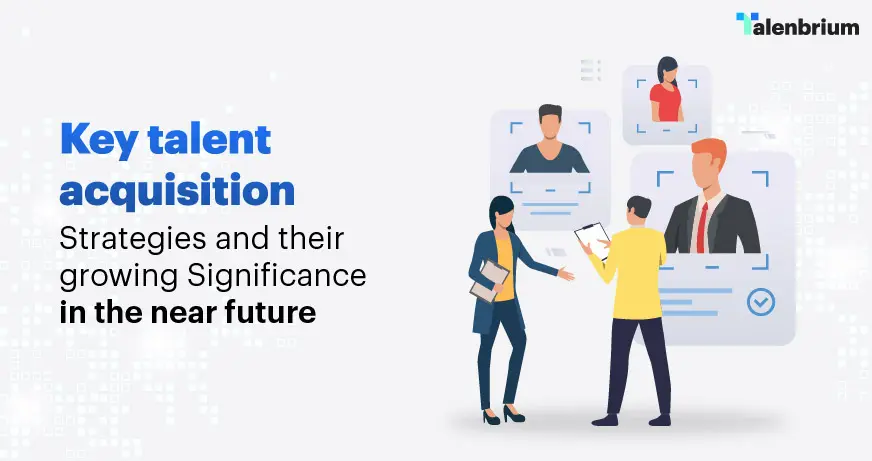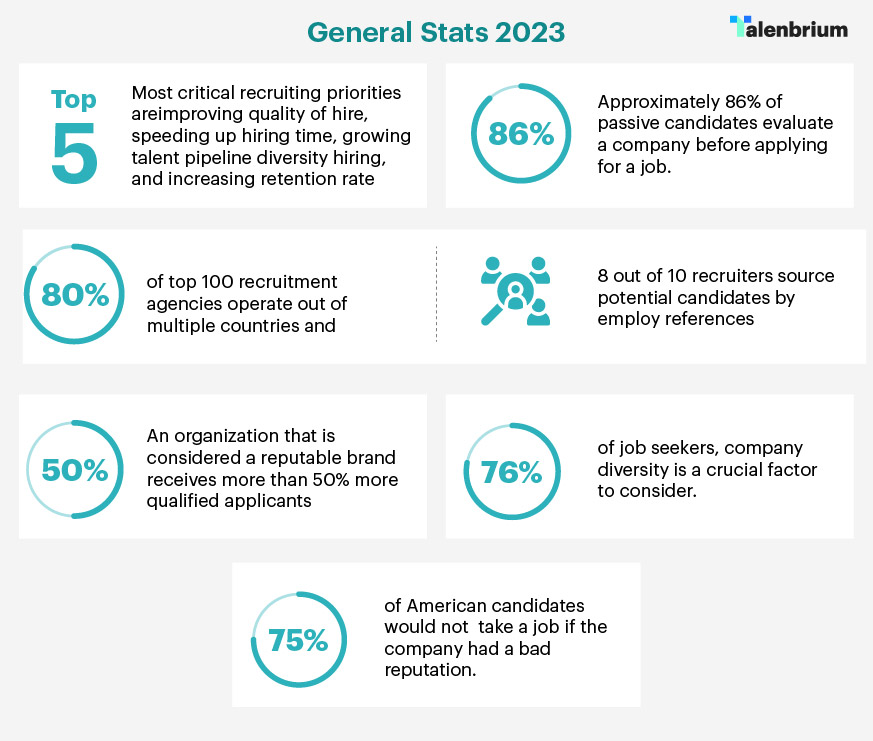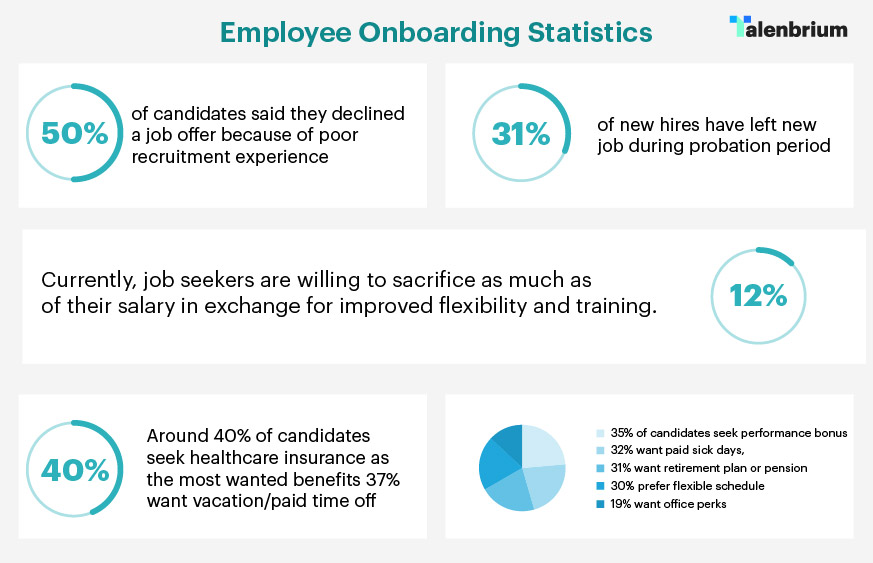Contact Us

Introduction In an ever-changing employment and business landscape, talent acquisition is emerging as an influential factor for various organizations.
The term ‘war for talent’ is nothing new, but as we look to the near future it is becoming increasingly apparent that its importance is expected to increase exponentially. Rapid advancements in technology, changing demographics and the workplace with changing dynamics are leading to the need for companies to adapt and create new talent acquisition strategies.
The talent landscape is not only changing but expanding. As the global marketplace becomes increasingly interconnected, and labor demand positions, more complex, organizations are realizing that talent acquisition strategies are more than just hiring to fill positions a strategy necessary for success and survival. As the business world races into the future, understanding how these strategies will evolve and what organizations can do to leverage their strengths will help navigate the dynamic world of talent acquisition.
General Stats 2023:

Employee Onboarding Statistics:

Let us delve into the key talent acquisition strategies currently determining recruitment and explore why they are destined for years to come
Recruitment Marketing
Recruitment advertising and marketing is a way of treating applicants as clients. Just as agencies use advertising strategies to draw and engage customers, the same techniques are now getting used to draw and engage capacity personnel. Recruitment advertising uses virtual platforms, social media and content marketing to create an attractive company emblem, showcase business enterprise subculture and attract the proper talent.
Recruitment marketing will become increasingly crucial in the near destiny as job seekers an increasing number of use social media and on-line content to analyze and compare capacity applicants. According to statistics, around 60% of recruiting experts predict that employer branding investments is expected to increase this year. In addition, more than 50% of large-scale organizations are implementing approaches to recruitment marketing that include multi-channel touch points such as email, and Short Message/Messaging Service (SMS), employment branding campaigns, recruitment events, and social media recruitment. Companies that spend money on a robust and tasty on-line presence can have an aggressive benefit in attracting pinnacle talent.
Employer Branding
A robust agency emblem is fundamental to talent acquisition fulfillment. This consists of the agency’s popularity as a corporation, its values, culture and the way it treats its employees. Employer branding becomes increasingly vital within the coming years as employees prioritize employer tradition, cause and social duty.
Employer brands are broader than simply aggressive wages and blessings. Organizations need to focus on honesty and transparency in communique. Companies that actually live their emblem values and talk about them efficaciously will entice skills that aligns with their vision.
Data-Driven Recruitment
Big data and increasingly sophisticated analytics have changed the way organizations hire talent. Data-driven recruitment uses data to make informed decisions about sourcing, selecting and employing candidates. Predictive analytics can help identify the best sources of talent, estimate the likelihood of a candidate’s success, and predict turnover.
In the future, data-driven recruitment is expected to only become more important as it allows companies to make hiring decisions more accurately and efficiently. Artificial Intelligence (AI) and Machine Learning (ML) play a key role in automating repetitive tasks and identifying the best candidates.
Diversity and Inclusion
Diversity and inclusion are not just buzzwords; these are key components of talent acquisition strategies. Teams bring a wide range of perspectives and ideas, leading to innovation and improved decision-making. Organizations that prioritize diversity and inclusion will have a competitive advantage in attracting top talent.
Demand for diverse and inclusive workplaces is expected to continue to grow in the near future. Companies need to work hard to create an environment where all individuals, regardless of their background, can thrive. Talent acquisition strategies should focus on building a diverse candidate pipeline and developing an inclusive culture.
Talent Pipelining
Talent pipelining is an active talent acquisition strategy that involves building relationships with potential employees before actively seeking employment This process anticipates the organization’s future talent needs and establishes relationships with non-employees, often through networking and talent communities.
As the job market evolves, talent management becomes increasingly important. With the rise of remote work and gig economy jobs, organizations need to plan for a fluid and agile workforce. Building relationships with talent early is expected to help companies fill positions faster with the right people.
Employee Referral Programs
Employee referral programs have long been a popular way to acquire talent. Employees often recommend individuals they believe would be a good fit for the company culture, and these candidates tend to perform well in their roles.
In the future, employee referral management is expected to continue to be an important part of talent acquisition, but it will also evolve. Companies are likely to invest heavily in these programs, offering more incentives for successful referrals, as they recognize the value of having prospective clients with recruiting staff examine them first.
Artificial Intelligence and Automation
The combination of Artificial Intelligence (AI) and automation in talent acquisition continues to grow. AI can streamline candidate screening, reduce bias and enhance the candidate experience. Automation can handle repetitive business tasks, freeing up HR professionals to focus on the more strategic aspects of talent acquisition.
Adoption of AI automation is expected to also continue to grow in the near future. This technology will be key to accessing, analyzing and engaging with candidates. However, companies will need guidance on ethical considerations and potential biases related to AI in hiring.
Skills-Based Hiring
As the skills gap widens and the nature of work evolves, skills-based hiring becomes more apparent. Instead of focusing solely on formal qualifications and experience, organizations are assessing candidates based on their skills and ability to adapt to changing job requirements around.
Competency-based recruitment will become increasingly important in the future as the job market becomes more dynamic Companies need to identify and nurture skills in their workforce, providing continuing education and skills development opportunities variety for and remain competitive.
Virtual Reality and Augmented Reality
Virtual Reality (VR) and Augmented Reality (AR) companies are revolutionizing the way they evaluate and onboard candidates. VR can be used to simulate and test immersive tasks, while AR can provide on-the-job training and support. This technology is especially valuable in jobs where hands-on experience is important.
In the near future, VR and AR are expected to play an important role in talent acquisition, especially for companies looking to hire candidates for specialized or technical roles. These provide a highly engaging and engaging leader-building experience, helping organizations identify the best talent.
Flexible Work Models
The COVID-19 pandemic has further accelerated adoption of flexible working models such as remote work, hybrid work and gig work. As these models become more common, talent acquisition strategies will need to adapt to changing user expectations.
In the future, offering flexibility and remote work options will be an important part of talent acquisition. Companies that embrace flexible employment models will have access to a wider pool of talent, including candidates who may not be geographically close to the facility
Conclusion
The future of talent acquisition is a dynamic landscape, with rapid technological advances, changing workforce demographics and shifting employee expectations Organizations must embrace and adapt talent acquisition strategies to stay ahead in a competitive market for talent. These strategies mentioned above play key roles to draw and retain best of the available talents.
In the near future, talent acquisition will become even more important as companies strive to build a flexible, diverse and innovative workforce. Companies investing in innovative ways of working and embracing the changing nature of hiring could be better positioned to achieve goals in the dynamic talent acquisition field.
Your email address will not be published. Required fields are marked *